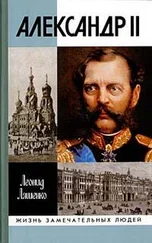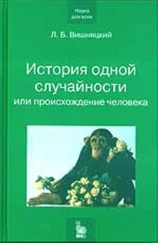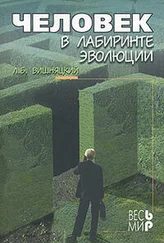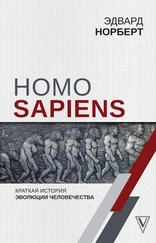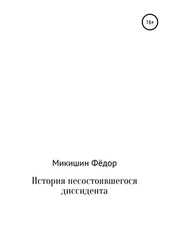Rightmire G. P. Human evolution in the Middle Pleistocene: the role of Homo heidelbergensis // EA. 1998. N 6. P. 218–227.
Rightmire G. P. Homo in the Middle Pleistocene: hypodigms, variation, and species recognition // EA. 2008. N 17. P. 8–21.
Rightmire G. P. Middle and later Pleistocene hominins in Africa and Southwest Asia // PNAS. 2009. N 106. P. 16046–16050.
Robson S. L., Wood B. Hominin life history: reconstruction and evolution // JA. 2008. N 212. P. 394–425.
Roebroeks W. Time for the Middle to Upper Paleolithic transition in Europe // JHE. 2008. N 55. P. 918–926.
Rogers A. R., Iltis D., Wooding S. Genetic variation at the MC1R locus and the time since loss of human body hair // CAn. 2004. N 45. P. 105–108.
Rolland N. Was the emergence of home bases and domestic fire a punctuated event? A review of the Middle Pleistocene record in Eurasia // Asian Perspectives. 2004. N 43. P. 248–280.
Rosas A. Occurrence of Neanderthal features in mandibles from the Atapuerca-SH site // AJPA. 2001. N 114. P. 74–91.
Rosas A., Bastir M., Martínez-Maza C., García-Tabernero A., Lalueza-Fox C. Inquiries into Neanderthal craniofacial development and evolution: “accretion” versus “organismic” models // K. Harvati and T. Harrison (eds). Neanderthals Revisited: New Approaches and Perspectives. Dordrecht: Springer, 2006. P. 37–69.
Rosen A. M. Middle Paleolithic plant exploitation: the microbotanical evidence // D. O. Henry (ed). Neanderthals in the Levant. Behavioral Organization and the Beginnings of Human Modernity. London/New York: Continuum, 2003. P. 156–171.
Roucoux K. H., Abreu L. de, Shackleton N. J., Tzedakis P. C. The response of NW Iberian vegetation to North Atlantic climate oscillations during the last 65 kyr // QSR. 2005. N 24. P. 1637–1653.
Royer D. F., Lockwood C. A., Scott J. E., Grine F. E. Size variation in early human mandibles and molars from Klasies River, South Africa: Comparison with other Middle and Late Pleistocene assemblages and with modern humans // AJPA. 2009. N 140. P. 312–323.
Rushton J. P. Cranial capacity related to sex, rank, and race in a stratified random sample of 6,325 U. S. military personnel // Intelligence. 1992. N 16. P. 401–413.
Santa Luca A. P. A re-examination of presumed Neanderthal-like fossils // JHE. 1978. N 7. P. 619–636.
Sawyer G. J., Maley B. Neanderthal reconstructed // AR. 2005. N 283B. P. 23–31.
Sawyer R. J. Hominids. New York: Tom Doherty Associates, 2002.
Schaaffhausen H. Funde in der Sipkahöhle in Mahren // Sonderbericht der Niederrheinischen Gesellschaft für Natur- und Heilkunde. 1880. P. 260–264.
Schillaci M. A., Froehlich J. W. Nonhuman primate hybridization and the taxonomic status of Neanderthals // AJPA. 2001. N 116. P. 157–166.
Schick K. D., Toth N. Making Silent Stones Speak. Human Evolution and the Dawn of Technology. New York: Touchstone, 1994.
Schmitt D., Churchill S. E., Hylander W. L. Experimental evidence concerning spear use in Neandertals and early modern humans // JAS. 2003. N 30. P. 103–114.
Schmitz R. W. The discovery of fossil man in the 18 thand 19 thcentury // R. W. Schmitz (ed). Neanderthal 1856–2006. Mainz am Rhein: Verlag Philipp von Zaibern, 2006a. P. 9–16.
Schmitz R. W. A romantic valley and a discovery that has changed the world // R. W. Schmitz (ed). Neanderthal 1856–2006. Mainz am Rhein: Verlag Philipp von Zaibern, 2006b. P. 35–44.
Schrenk F., Müller S. The Neanderthals. New York: Routledge, 2009. (Transl. from 2005 Germ. ed.)
Schwalbe G. Über die specifischen Merkmale des Neanderthalschädels // Verbandlungen der Anatomische Gesselschaft: Ergänzbeft zur Anatomische Anzeiger 19, 1901. P. 44–61.
Schwalbe G. Studien zur Vorgeschichte des Menschen: I. Zur Frage der Abstammung des menschen. Stuttgart: E. Scheizerbart, 1906.
Schwartz J. H., Tattersall I., Laitman J. T. New thoughts on Neanderthal behavior: Evidence from nasal morphology // H. Ullrich (ed). Hominid Evolution: Lifestyles and Strategies. Gelsenkirchen; Schwelm: Edition Archaea, 1999. P. 166–186.
Schwartz J. H., Tattersall I., Teschler-Nicola M. Architecture of the nasal complex in Neanderthals: Comparison with other hominids and phylogenetic significance // AR. 2008. N 291. P. 1517–1534.
Semal P., Rougier H., Crevecoeur I., Jungels C., Flas D., Hauzeur A., Maureille B., Germonpré M., Bocherens H., Pirson S., Cammaert L., Clerck N. De, Hambucken A., Higham T., Toussaint M., Plicht J. van der. New data on the late Neandertals: Direct dating of the Belgian Spy fossils // AJPA. 2009. N 138. P. 421–428.
Semendeferi K., Damasio H., Frank R., Hoesen G. W. van. The evolution of the frontal lobes: a volumetric analyses based on three dimensional reconstructions of magnetic resonance scans of human and ape brains // JHE. 1997. N 32. P. 375–388.
Serangeli J., Bolus M. Out of Europe — The dispersal of a successful European hominin form // Quartär. 2008. N 55. P. 83–98.
Serre D., Pääbo S. The fate of European Neanderthals: results and perspectives from ancient DNA analyses // K. Harvati, T. Harrison (eds). Neanderthals Revisited: New Approaches and Perspectives. Dordrecht: Springer, 2006. P. 211–219.
Shang H., Tong H., Zhang S., Chen F., Trinkaus E. An early modern human from Tianyuan cave, Zhoukoudian, China // PNAS. 2007. N 104. P. 6573–6578.
Shea J. J., Sisk M. L. Complex projectile technology and Homo sapiens dispersal into Western Eurasia // PA. 2010. P. 100–122.
Shen G., Wang, Cheng H., Edwards R. L. Mass spectrometric U-series dating of Laibin hominid site in Guangxi, southern China // JAS. 2007. N 35. P. 2109–2114.
Shreeve J. The Neandertal Enigma: Solving the Mystery of Modern Human Origins. New York: William Morrow and Company, 1995.
Slimak L. Circulations de matériaux très exotiques au Paléolithique moyen, une notion de détail // BSPF. 2008. N 105. P. 267–281.
Smith F. H. Upper Pleistocene hominid evolution in South-Central Europe: A review of the evidence and analysis of trends // CAn. 1982. N 23. P. 667–703.
Smith F. H. Species, populations, and assimilation in later human evolution // C. S. Larsen (ed). A Companion to Biological Anthropology. Chichester: Wiley-Blackwell. P. 357–378.
Smith F. H., Janković I., Karavanić I. The assimilation model, model human origins in Europe, and the extinction of Neandertals // QI. 2005. N 137. P. 7–19.
Smith T. M., Harvati K., Olejniczak A. J., Reid D. J., Hublin J.-J., Panagopoulou E. Brief communication: dental development and enamel thickness in the Lakonis Neanderthal molar // AJPA. 2009. N 138. P. 112–118.
Snodgrass J. J., Leonard W. R. Neandertal energetics revisited: insights into population dynamics and life history evolution // PA. 2009. P. 220–237.
Soares P., Achilli A., Semino O., Davies W., Macaulay V., Bandelt H.-J., Torroni A., Richards M. B. The Archaeogenetics of Europe // CB. 2010. N 20. R174–R183.
Sommer M. Mirror, mirror on the wall: Neanderthal as image and ‘distortion’ in early 20th-century French science and press // SSS. 2006. N 36. P. 207–240.
Sorensen M. V., Leonard W. R. Neandertal energetics and foraging efficiency // JHE. 2001. N 40. P. 483–495.
Sørensen B. n. d. Demography and the extinction of the European Neanderthals // http://energy.ruc.dk/Neanderthal%20Demography.pdf
Soressi M., D’Errico F. Pigments, gravures, parures: Les conportements symboliques controversés des Néandertaliens // B. Vandermeersch, B. Maureille (dir). Les Néandertaliens. Biologie et cultures. Paris: Éditions du CTHS, 2007. P. 297–309.
Читать дальше

